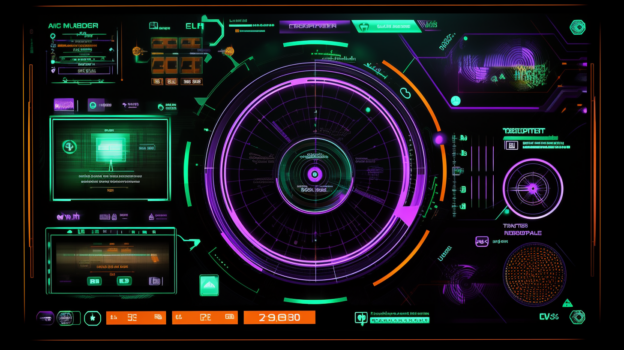In the modern world, technology penetrates all areas of our lives, shaping our routines, changing the way we communicate, and even defining the places we call home. I’d like to take a moment to introduce you to smart home technology, a concept that is redefining our living spaces and playing a transformative role in the lives of individuals with Autism.
When we ask ourselves, “What is smart home technology?” we’re delving into a world of devices and systems designed to automate tasks, enhance comfort, conserve energy, and improve security. These innovations have made a remarkable impact on the lives of many, but their benefits are particularly profound for those living with Autism.
Examining What is Smart Home Technology
Before diving into its implications for Autism, let’s delve deeper into the query: “What is smart home technology?” Essentially, it’s a network of devices connected through the Internet of Things (IoT) that interact and communicate with each other. These devices can be controlled remotely or programmed to perform tasks automatically, often in response to specific triggers or schedules.
Smart home technology can be used to manage a variety of tasks, from security systems to lighting and temperature control. It can also be used to monitor activity within the home, such as door locks, motion detectors, and cameras. By using these devices together in a network, users can create a personalized and automated environment that meets their specific needs.
For those living with Autism, this technology has the potential to play an invaluable role in their daily lives. Smart home devices can help reduce anxiety by providing an environment that is predictable and controllable. They can also provide a sense of security by allowing parents or caregivers to monitor activity within the home remotely. Additionally, these devices can help individuals with Autism maintain routines and perform tasks independently, such as turning on lights or unlocking doors at specific times. Ultimately, smart home technology provides an opportunity for individuals with Autism to live more comfortably and securely in their own homes.
Smart Home Technology Examples
To better understand what smart home technology is, consider some of the many smart home technology examples available today. The Amazon Echo or Google Home, for instance, are voice-controlled smart speakers that can play music, answer questions, or control other devices. Robotic vacuum cleaners like Roomba can clean the house on a set schedule, while smart thermostats like Nest can adjust temperatures based on your habits and preferences.
Understanding Autism: A Brief Overview
Autism, or Autism Spectrum Disorder (ASD), is a neurological and developmental disorder affecting social interaction, communication skills, and behavior. Each individual with Autism experiences it differently and to varying degrees, which is why it’s referred to as a spectrum disorder. The challenges that come with Autism can be daunting, but with the right support, individuals with Autism can live fulfilling lives.
Connection Between Technology and Autism
The link between technology and Autism might not be immediately apparent, but it is undeniably strong. Technology has an inherent capacity to simplify complex tasks, provide a sense of structure and predictability, and offer non-verbal communication methods. These are all advantages that can be particularly beneficial to individuals with Autism, who often struggle with social interaction, routine changes, and verbal communication.
Smart home technology can offer a unique set of solutions to address the particular challenges that individuals with Autism face. For instance, devices like Amazon Echo and Google Home can provide an alternative form of communication for those who struggle with verbal communication. Smart lights can also provide comfort and security through the control of lighting in a space, allowing for a safe environment to be created. Other smart home devices such as door locks and security cameras can help increase safety and provide peace of mind for those living with Autism.
In addition, technology can be used to create routines that help individuals on the autism spectrum manage their daily lives more effectively. For example, using voice assistants or scheduling apps to create reminders or alerts at specific times throughout the day can help keep individuals on track and reduce anxiety associated with unexpected changes in routine. Technology can also be used to create visual schedules that provide structure and predictability, which is especially helpful for those who struggle with social interaction or verbal communication skills.
Overall, smart home technology has the potential to make a huge impact on the lives of those living with Autism by providing comfort, security, structure, and predictability.
Exploring Specific Devices for Autism
When it comes to specific devices for Autism, there is a vast range to explore. For example, visual timers can provide an intuitive understanding of time, reducing anxiety around routine changes. Meanwhile, assistive communication apps can help those who struggle with verbal communication express their thoughts and needs.
In addition, wearable technology can be used to detect and alert parents or caregivers of any behavioral changes or triggers that may occur. This can be especially useful for those with Autism who may have difficulty expressing themselves verbally. Wearable devices can also provide calming sensory feedback such as vibrations, light, and sound to help individuals relax in stressful situations.
Finally, robots and other interactive toys can help engage children with Autism in activities that they might not otherwise enjoy. These tools can offer a safe space to explore social interaction without the fear of judgment or misunderstandings.
Overall, there are many different types of technology that can be used to support individuals with Autism in their everyday lives. By providing comfort, security, structure, and predictability, these devices can help increase independence and quality of life for those living on the autism spectrum.
The Benefits of a Smart Home for Elderly and Disabled Individuals, Including Those with Autism
The benefits of a smart home for elderly and disabled individuals are manifold. Smart home technology can enhance safety, promote independence, and simplify routine tasks. For those with Autism, these benefits can be life-transforming. A smart home can provide the structure and predictability that many individuals with Autism thrive on, and offer non-verbal methods of control and communication.
The Impact of Assistive Technology on Autism
The impact of assistive technology on Autism is profound. It can help in managing sensory overload, improving communication, and facilitating learning. Additionally, it can also foster independence, promoting self-confidence and self-esteem in individuals with Autism.
Smart home technology can also offer visual cues, such as flashing lights when a certain task is complete or when a person needs to move to another room. This can be invaluable for those with autism who may need visual support to understand their environment and routine changes. Furthermore, voice commands can be used to control various aspects of the smart home, allowing individuals with Autism to communicate their needs without having to rely on verbal communication.
The possibilities are endless when it comes to assistive technology for those with Autism. By leveraging the power of modern technology, we can provide individuals on the spectrum with the tools they need to thrive in their everyday lives. With the right resources and support, individuals on the Autism spectrum can lead independent and fulfilling lives.
Real-Life Examples of Autism Technologies in Use
Real-life examples of autism technologies in use are increasingly abundant, and they showcase the transformative power of these innovations. For instance, families are using smart speakers to set reminders for routines, reducing anxiety for their Autistic family members. Smartphone apps are helping individuals with Autism communicate their feelings and needs, even when verbal communication is a challenge.
How Technology for Autism is Changing Lives
In essence, technology for Autism is changing lives by overcoming barriers and unlocking potential. It’s helping individuals with Autism communicate, learn, and live independently. It’s also offering families a sense of relief and hope, knowing that their loved ones have tools that can support them in their daily lives.
In addition to the real-life examples of autism technologies in use, there are also countless innovative products and services designed specifically for individuals with Autism. These products can range from specialized toys that help children with Autism express themselves and develop language skills, to sophisticated communication devices that enable those on the spectrum to interact with family members and peers.
Furthermore, virtual reality (VR) is becoming increasingly popular as a tool for teaching those on the spectrum. VR can be used to simulate different environments or scenarios, making it easier for individuals with Autism to practice everyday tasks without feeling overwhelmed. By providing an immersive experience, VR can help individuals on the spectrum better understand their surroundings and build confidence in social settings.
Overall, assistive technology is revolutionizing how we support those living with Autism. It’s helping them communicate more effectively, learn more efficiently, and live more independently—all while offering families a sense of relief and hope.
The Future of Autism Assistive Technology
Looking to the future, the potential of Autism assistive technology is limitless. As technology continues to evolve, we can expect to see even more innovative solutions designed to support individuals with Autism. From AI-powered learning tools to advanced sensory devices, the future looks bright for Autism and technology.
As technology continues to advance, the possibilities for Autism assistive technologies are endless. We can expect to see more sophisticated devices and applications that can help individuals on the spectrum communicate more effectively, learn more efficiently, and live independently. For instance, AI-powered learning tools can be used to customize education plans based on an individual’s needs, while advanced sensory devices can detect changes in their environment and provide real-time feedback. We may even see robots used as companions for those with Autism.
At the same time, we must also consider the ethical implications of using technology for Autism support. How will this technology be regulated? Who will have access to it? What safeguards are in place to protect individuals from potential misuse? These are important questions that need to be addressed in order for us to ensure that technology is being used responsibly and ethically when it comes to Autism support.
The Intersection of Autism and Technology
The intersection of Autism and technology is a fascinating and hopeful place. Smart home technology and assistive devices are not just enhancing the quality of life for individuals with Autism, they’re transforming it. They’re providing tools that can overcome challenges, foster independence, and unlock potential. If you or your loved ones are living with Autism, I encourage you to explore the extraordinary world of Autism assistive technology. The future is here, and it’s smart, connected, and incredibly empowering.
John




